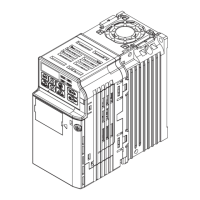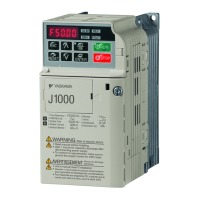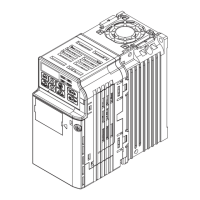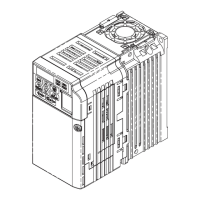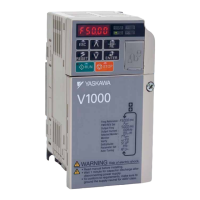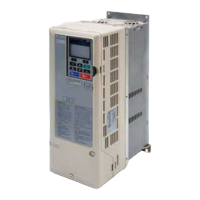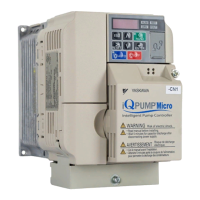n
Motor Stalls During Acceleration or With Large Loads
Cause Possible Solutions
Load is too heavy.
Take the following steps to resolve the problem:
• Reduce the load.
• Increase the acceleration time.
• Increase motor capacity.
• Although the drive has a Stall Prevention function and a Torque
Compensation Limit function,
accelerating too quickly or trying to drive
an excessively large load can exceed the capabilities of the motor.
n
Motor Will Not Accelerate or the Acceleration Time is Too Long
Cause Possible Solutions
Frequency reference is too low.
• Check the maximum output frequency (E1-04).
• Increase E1-04 if it is set too low.
Check U1-01 for proper frequency reference.
Check if a frequency reference signal switch has been set to one of the multi-
function input terminals.
Check for low gain level set to terminal A1 (H3-03).
Load is too heavy.
• Reduce the load so that the output current remains within the
motor-rated current.
• In extruder and mixer applications, the load
will sometimes increase as
the temperature drops.
Check if the mechanical brake is fully releasing as it should.
Acceleration time has been set too long.
Check if the acceleration time parameters have been set too long (C1-01,
-03).
Motor characteristics and drive parameter
settings are incompatible with one another
in V/f Control.
• Set the correct V/f pattern so that it matches the characteristics of the
motor being used.
The Stall Prevention level during
acceleration and deceleration set too low.
• Check the Stall Prevention level during acceleration (L3-02).
• If L3-02 is set too low, acceleration will take a fair amount of time.
• Increase L3-02.
The Stall Prevention level during run has
been set too low.
• Check the Stall Prevention level during run (L3-06).
• If L3-06 is set too low, speed will drop as the drive outputs torque.
• Increase the setting value.
Drive reached the limitations.
• Be aware that V/f Control is comparatively limited when it comes to
producing torque at low speeds.
n
Drive Frequency Reference Differs from the Controller Frequency
Reference Command
Cause Possible Solutions
The analog input frequency gain and bias
are set to incorrect values.
• Check the main speed frequency reference terminal input gain level
assigned to terminal A1, as well as
the frequency reference input bias to
terminal A1 (parameters H3-03 and H3-04).
• Set these parameters to the appropriate values.
5.8 Troubleshooting without Fault Display
146
YASKAWA ELECTRIC TOEP C710606 25B YASKAWA AC Drive J1000 Installation & Start-Up Manual
2/6/2008-14:44
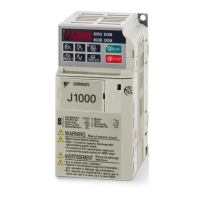
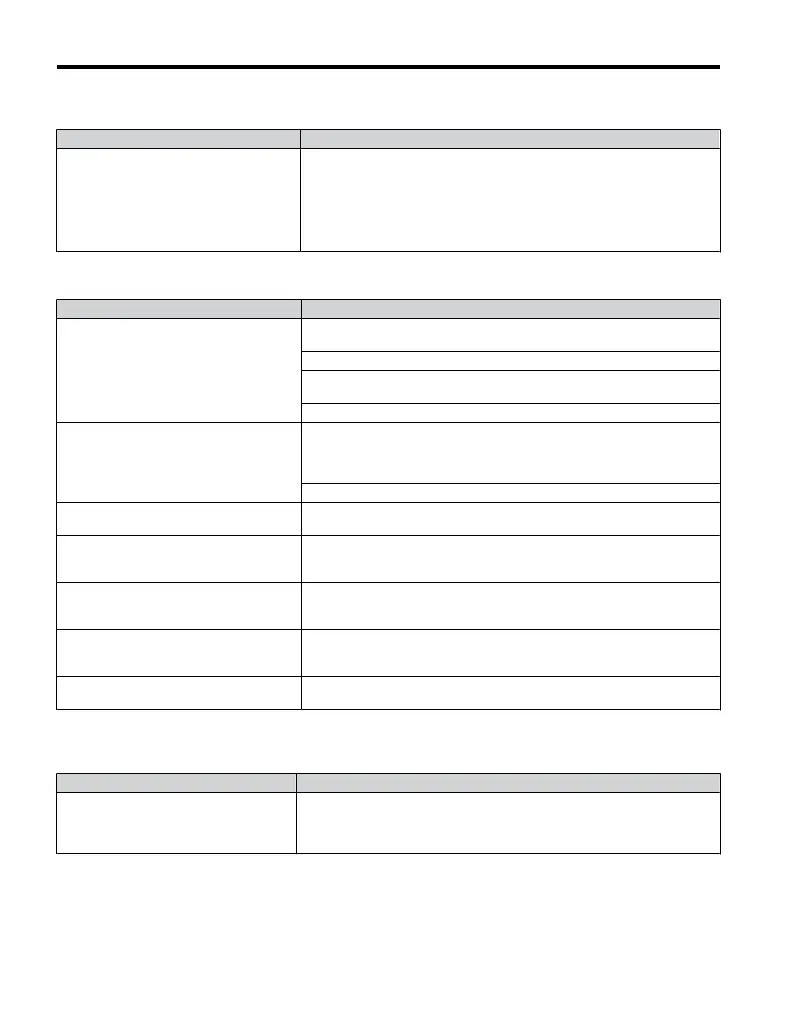